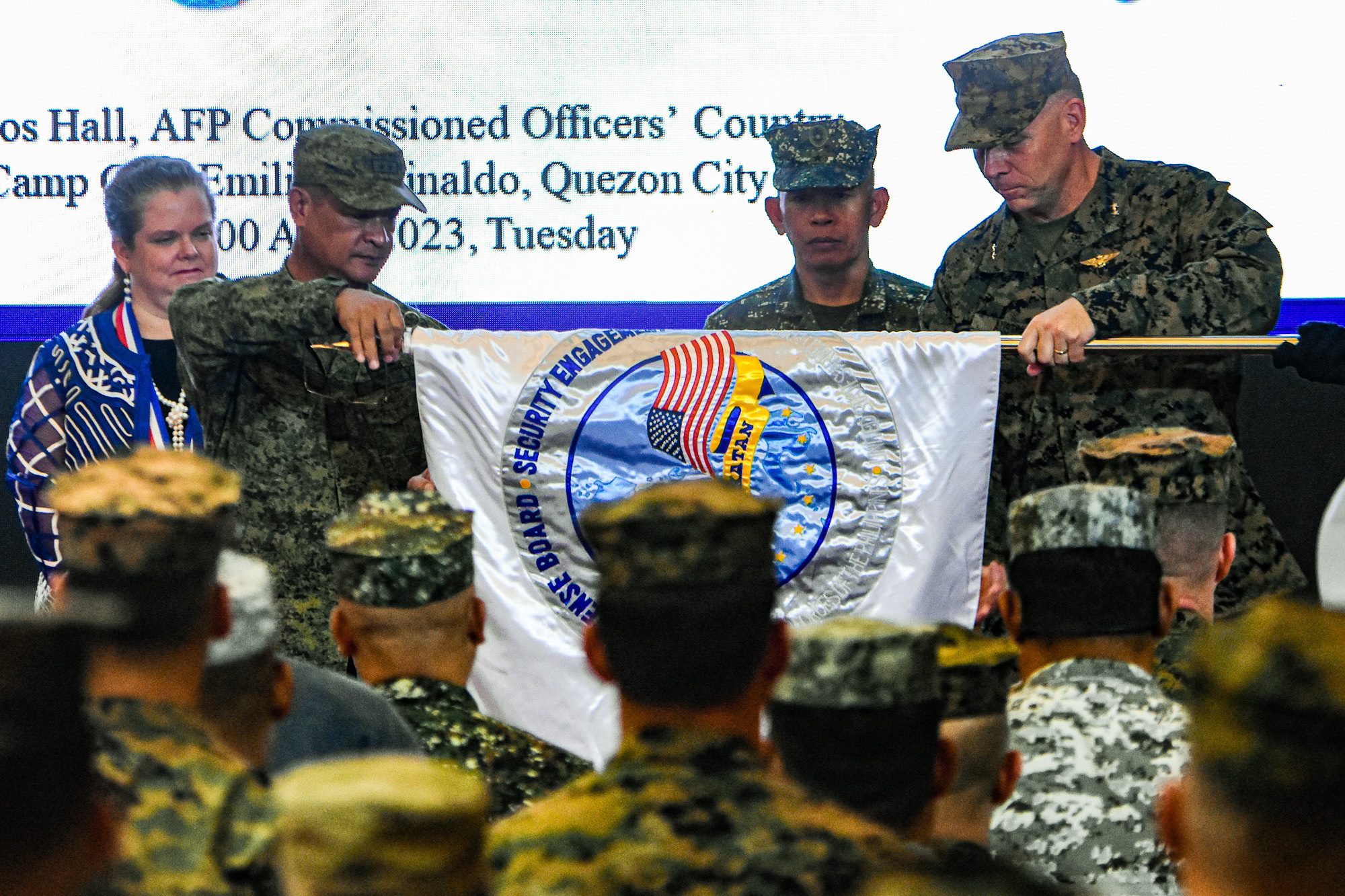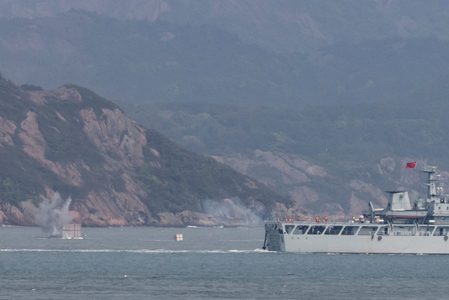SUMMARY
This is AI generated summarization, which may have errors. For context, always refer to the full article.

MANILA, Philippines – The Armed Forces of the Philippines (AFP) and its counterparts from the United States kicked off the largest Balikatan (shoulder-to-shoulder) exercise on Tuesday, April 11.
The exercise is held annually to enhance ties between the US and its longest treaty ally in the Indo-Pacific region. The Philippines and the US’ Mutual Defense Treaty (MDT) paved the way for these exercises that are now being held for the 38th time.
AFP Chief of Staff General Andres Centino led the opening ceremony, along with US chargé d’affaires Heather Variava. The exercise director for the Philippines, Major General Marvin Licudine, and his counterpart from the US, Major General Eric Austin, also attended the opening ceremony.
“The highlight of the exercise will be the combined joint littoral live-fire exercise, which aims to rehearse joint and combined tactics techniques and procedures to execute maritime strike,” Licudine said in a speech at the opening ceremony.
For the part of the US forces, Austin said the Balikatan exercises will ensure “we are prepared to respond to real world challenges together.”
This year’s Balikatan is dubbed the largest because over 17,000 soldiers will participate: 12,200 from the US; 5,400 from the Philippines, and around 100 from the Australian Defense Force. Aside from the participating countries, neighboring allied nations will serve as observers in the training. The Philippine military did not name these countries.
Most of the activities will take place in Northern and Central Luzon, Palawan in southern Luzon, and Antique in Western Visayas – areas covered by the AFP’s Northern Luzon Command, Western Command, and Visayas Command. The four major events will include command post, cyber defense, field exercise, and humanitarian civic assistance.
According to the AFP, the trainings will also include amphibious operations, live-fire exercise, urban operations, aviation operations, and counter-terrorism. Aside from these, Licudine said this year’s program also aims to enhance the military’s maritime and coastal defense capabilities.
Austin added that humanitarian efforts in some areas in the country will take place within the training’s time frame.
Philippine military assets that will join the Balikatan include 105 Howitzers, FA-50 fighter planes, Blackhawk choppers, A-29B aircraft, T-129 ATAK helicopters, and Fast Frigate Patrol Ship and Landing Dock.

Key activities
Among the highlights of this year’s Balikatan is the cyber-defense training, where US troops will train Filipino soldiers to build cybersecurity and defense infrastructure to “protect, detect, respond, and recover from various kinds of cyber threats.”
“The fact that we’re exercising cyber defense is testimony to the changing character of warfare and the fact that all of our services have to modernize and adapt to meeting the threats that exist across the world,” Austin said.
For the first time in 38 years, the exercise will also include a live-fire exercise where a decommissioned ship will be sunk using military assets.
“Bombardment demonstrates that we are competent in employing combined arms and joint capabilities. That is what we are trying to demonstrate – we are demonstrating that we are combat ready, [that] we have the capacity to deliver fires,” Balikatan 2023 spokesperson Colonel Mike Logico told reporters in a chance interview.
“It is a demonstration of confidence that we can actually perform and execute our mandate,” Logico added.
Meanwhile, a report from Reuters said China’s foreign ministry on Monday criticized the joint exercises, saying they “must not interfere in South China Sea disputes, still less harm China’s territorial sovereignty, maritime rights and interests and security interests.”
Why this matters
The 38th Balikatan exercise is being held amid rising tension in the Asian region. China held military exercises on April 9 shortly after Taiwanese President Tsai Ing-wen met with US House of Representatives Speaker Kevin McCarthy. China even simulated a scenario where it struck Taiwan.
Amid the threats, Michael McCaul, chair of the US House Foreign Affairs Committee, pledged to help provide training to Taiwan’s military and to speed up the delivery of weapons, adding that the US is in strong support of Taiwan.
China also recently aired its concerns over the new Enhanced Defense Cooperation Agreement (EDCA) sites in the Philippines. Recently, the Philippines allowed the US to expand its presence in the country by establishing additional EDCA sites in key areas in northern Luzon near Taiwan, and in Palawan in the West Philippine Sea.
China’s Foreign Ministry Spokesperson Mao Ning blasted the US for the sites – but President Ferdinand Marcos downplayed the statement and said there was no need to “worry” as long as no offensive attack takes place.
The Balikatan exercise partly fulfills the defense treaty between the Philippines and the US. Signed in 1951, the MDT contains the two countries’ pledge to defend each other in the event of an armed attack. – with reports from Reuters/Rappler.com
Add a comment
How does this make you feel?
















There are no comments yet. Add your comment to start the conversation.